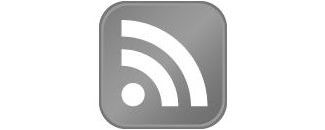-
Topics
subnavigation
Topics
Electromagnetic fields
- What are electromagnetic fields?
- Static and low-frequency fields
- Radiation protection relating to the expansion of the national grid
- High-frequency fields
- Radiation protection in mobile communication
Optical radiation
Ionising radiation
- What is ionising radiation?
- Radioactivity in the environment
- Applications in medicine
- Applications in daily life and in technology
- Effects
- What are the effects of radiation?
- Effects of selected radioactive materials
- Consequences of a radiation accident
- Cancer and leukaemia
- Genetic radiation effects
- Individual radiosensitivity
- Epidemiology of radiation-induced diseases
- Ionising radiation: positive effects?
- Risk estimation and assessment
- Radiation protection
- Nuclear accident management
- Service offers
-
The BfS
subnavigation
The BfS
- About us
- Science and research
- Laws and regulations
- BfS Topics in the Bundestag
- Links
Sunny Emails: UV Newsletter
Year of issue 2017
Date 2017.04.20
Date 2017.04.20
April weather – rain, snow, sunshine all together. Particularly in springtime, the weather is very changeable. Yet, whatever the weather conditions, the strength of the sun's radiation rises during spring, thereby increasing exposure to ultraviolet (UV) radiation. The UV-newsletter to be sent regularly once again by the Federal Office for Radiation (Bundesamt für Strahlenschutz (BfS) provides information about the strength of ultraviolet radiation and on how to protect from ultraviolet radiation.
 UV forecast including UV index and expected weather conditions for 10 areas covered, set out in a Table and on a map of Germany
UV forecast including UV index and expected weather conditions for 10 areas covered, set out in a Table and on a map of Germany
When the UV-newsletter was initiated in 2012, it was intended as a service specifically to the media. Today private persons, as well as people who work outdoors and even kindergartens are interested in this info service. "We are particularly pleased that kindergartners nationwide know the UV-newsletter"
, says Jan Lauer, BfS press spokesman. "For sun protection is of great importance, particularly during childhood. Sunburns in young years significantly increase the risk of skin cancer in later life."
Sun protection is most important during childhood.
BfS issues 3 day UVI forecasts covering 10 areas in Germany each year from April to September, on Monday, Wednesday and Friday. The forecasts are based on data from the UV monitoring network and on current predictions of ozone levels and cloud cover situations from Germany's National Meteorological Service (Deutscher Wetterdienst, DWD).
The UV index (UVI) is a scale– similar to the Richter Scale for Earthquakes – reflecting levels of UV radiation intensity relevant to sunburn. Each UVI reading is assigned to a set of recommendations for protection. The higher the intensity of UV radiation relevant to sunburn and the UV index, the earlier the occurrence of sunburn on unprotected skin and the necessity to take precautions.
UVI forecast includes conditions with and without cloud cover
When the cloud cover breaks up contrary to the forecast, the UV radiation intensity rises and the forecasted UVI-value would be too low. For this reason, two UVI-values are indicated: the lower level stands for the expected UVI with the forecasted cloud cover, the higher value represents the UVI expected with bright sunshine. "So people can prepare for short-term weather changes and keep at hand additional sun protection"
, says Jan Lauer from BfS.
Interested parties can sign up for the UV Newsletter on www.bfs.de/uv-newsletter.
How to protect yourself
At UVI readings between 3 and 7, protection is required, and at UVI 8 and higher, protection is absolutely necessary. The best UV protection is ensured by a combination of different measures:
- Avoid exposure to strong sun
- Cover up with clothes
- Use a sunscreen
- Protect eyes
It is recommended to seek shade particularly around noon, and to stay indoors at UVI 8 and more. Clothing, shoes and head covering are the simplest ways to ensure effective UV protection. As a rule, tightly woven fabrics provide the best protection. Sunscreen with a high light protection factor should be generously and repeatedly applied to uncovered skin. Best protection of the eyes are tight-fitting sunglasses filtering UV radiation up to 400 Nanometers (lable "UV 400"
).
State of 2017.04.20



